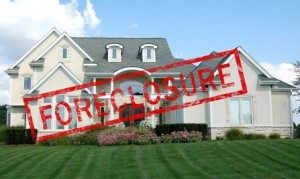Finding your perfect home is not always as easy process. With the surplus of homes for sale in most cities, buyers may find there are many properties –both new and old - that meet their search criteria. Choosing whether to renovate an old house or buy a new one can be a tricky decision for some.
When deciding on which type of house is right for you, it’s important to take into consideration the following factors:
Style – For many, the allure of an older home is its character and uniqueness. Many of the homes being built today are tract houses that lack personality and quality of construction. An older home will have the charm that many buyers are looking for, rather than being a “cookie cutter” model that someone else has. However, they require a lot of TLC that many buyers aren’t cut out for. Knowing whether to choose an old house or buy a new one largely depends on your style preferences. Do you prefer clean lines, open concepts and a modern look, or are you into a more traditional floor plan with closed rooms, built-ins and nooks?
Lifestyle – Think about how you like to spend your free time. Do you enjoy working on projects, building or creating things at home? Or would you rather spend the evenings and weekends outside of the house, traveling, hiking or shopping? If you answered the latter, an old house may not make sense for you in the long-term as they typically require more maintenance and care.
Resources – Aside from the funds needed to purchase the home, do you have the budget and resources to update and maintain an old house? Even an older home that has been updated can be expensive to maintain due to scarce availability of certain building materials and original fixtures. Many buyers become “house poor” after making their down payment and buying a house. With no savings they have little budget left over for these house updates. If you don’t have the resources to dedicate to updating and maintaining the home, it may be a better choice to buy a new house. Newer houses typically need no initial repairs, no additional budget and are move-in ready.
Patience – Old houses have character, but maintaining that sense of charm doesn’t come easy. Unless they were recently updated, older homes require time and energy to restore. Because they were built in a different time period, older houses may require custom or hard-to-fit materials, appliances and fixtures that many contractors are not skilled in using. These material and construction delays can greatly extend your project deadlines.
Knowledge – Are you knowledgeable about construction and home improvement? Knowing how long restoration and maintenance projects will take and how much they will cost is a major prerequisite for purchasing an older home, especially if you’re planning to completely renovate an old home. If you’re tight on budget and resources, are you able and willing to do some of the work yourself?
An older home can be a quality investment with long-term potential and timeless style. A newer home can be a no-hassle, peaceful retreat that doesn’t require extra money or time to move in. If you do the right planning and homework ahead of time, you’ll be able to find the house that fits your needs, budget and lifestyle and relax, knowing you made the best decision in choosing your new home.
To search for homes for sale in Wheaton or an area near you, visit the Wheaton Homes For Sale and enter your search criteria.


